Note: This paper provides only an introduction to the subject. Any system changes should be planned and executed by qualified professionals.

Overview
The solar industry continues its remarkable growth trajectory, fueled by advanced technologies, declining costs, and government initiatives such as the Inflation Reduction Act (IRA). Passed by Congress in August 2022, the IRA allocated $369 billion for clean energy infrastructure, with over $270 billion in tax credits for solar, wind, battery storage, and other clean energy projects. With a focus on domestic manufacturing, the IRA has led to some major projections for the U.S. solar industry over the next decade:
- A 48% increase in deployments
- Over $600 billion in new investments
- More than 200,000 jobs created
- Cost of producing electricity cut by up to 60%
As IRA tax credits are released in 2024 and beyond, growth is expected across all solar segments:
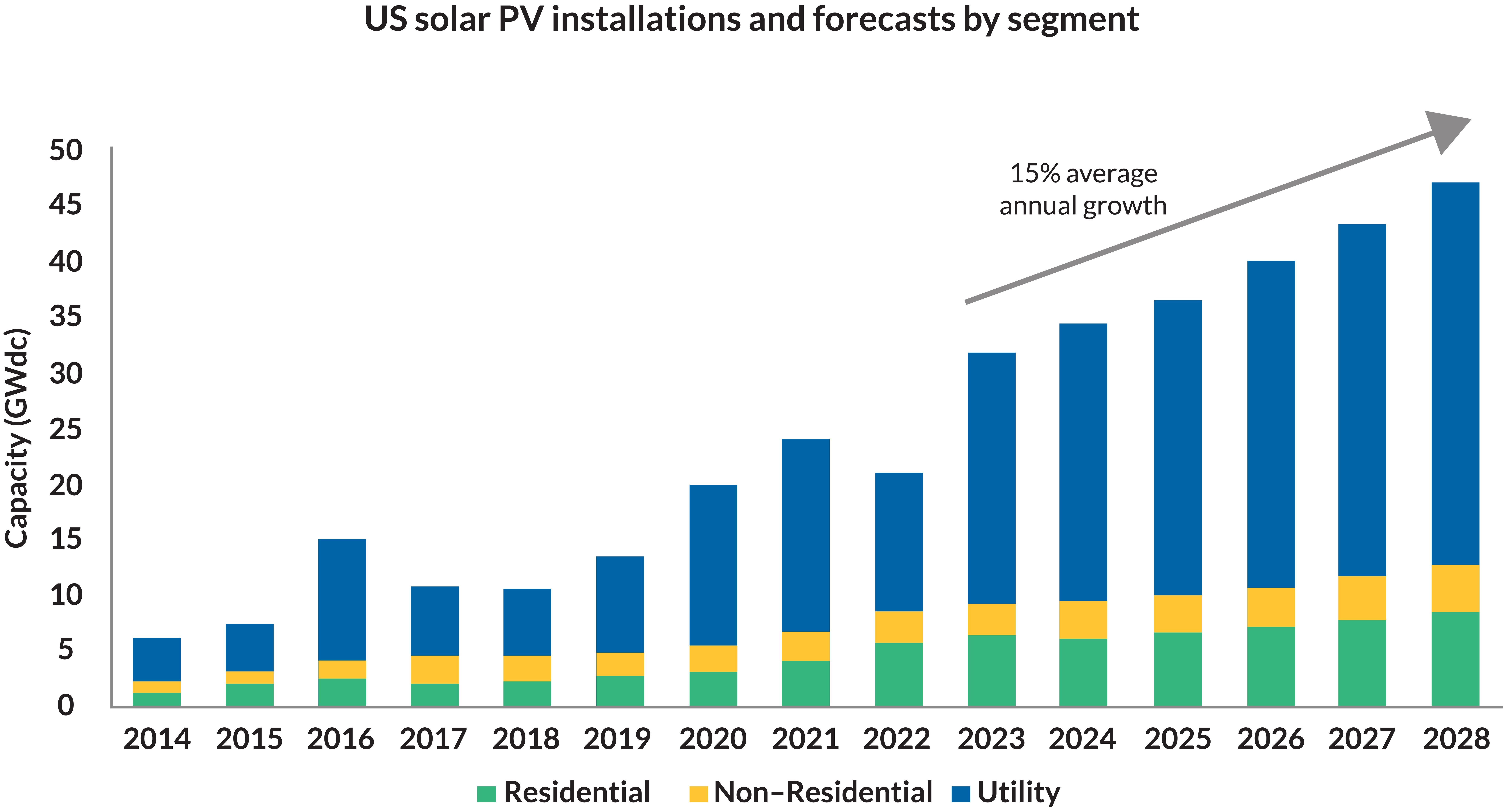
National Electric Code (NEC)
With new employees, new technologies, and record installations, solar safety must remain a top priority and the National Electric Code (NEC) must be followed. The NEC, also known as NFPA 70 (National Fire Protection Association 70), is a set of standards for the safe installation of electrical equipment and wiring in the United States. It provides guidelines for electricians, engineers, contractors, and other professionals involved in the design, installation, and inspection of electrical systems.
The NEC is intended to enhance electrical safety and reduce the risk of electrical fires, shocks, and other hazards. The code is typically updated every three years with input from industry experts, code-making panels, and public comments. Each new edition incorporates changes based on technological advancements, lessons learned from past incidents, and the evolving needs of the electrical industry. NEC organization is as follows:

NEC 2023
The latest edition, NEC 2023, was made effective by the NFPA Standards Council in September 2022 and officially became available for federal, state, county, and municipal government entities. As of July 2023, only a few state early adopters (ID, MA, MN, WY) had the latest NEC in effect:
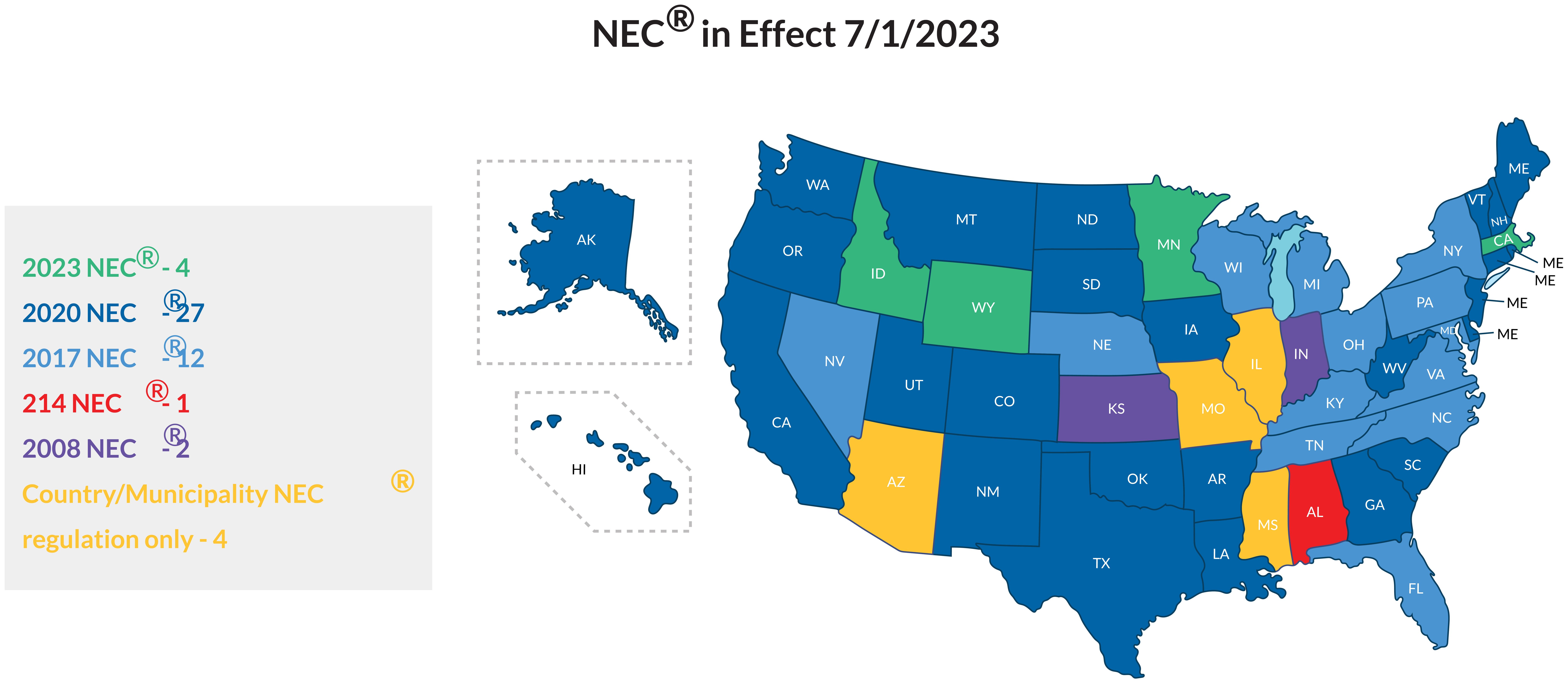
Despite only being active in 4 states, the 2023 NEC update process is already underway in an additional 12 states (CO, GA, IA, KY, MI, NC, ND, NY, OH, OR, SD, TX) with more to follow in 2024. As more and more states utilize the latest version, the following supplemental sections will be especially applicable for those in the solar and storage industries:
- Article 480: Stationary Standby Batteries
- Article 690: Solar Photovoltaic (PV) Systems
- Article 691: Large-Scale Photovoltaic (PV) Electric Supply Stations
- Article 705: Interconnected Electric Power Production Sources
- Article 706: Energy Storage Systems
- Article 710: Stand-Alone Systems
2023 Changes
With dynamic industries such as solar and storage, it is natural that there are changes and clarifications in each edition of the NEC as systems evolve. For those accustomed to the 2020 edition about to make the transition, here are some of the revisions that were made in the 2023 NEC (for all sections, definitions were removed and added to Article 100):
1. Article 480: Stationary Standby Batteries
- Title changed from ‘Storage Batteries’ to ‘Stationary Standby Batteries’.
- A battery storing energy is not necessarily an energy storage system!
- A battery storing energy is not necessarily an energy storage system!
2. Article 690: Solar Photovoltaic (PV) Systems
- 690.1, Scope, introduces new images with “PV string circuit” replacing “PV output circuit”.
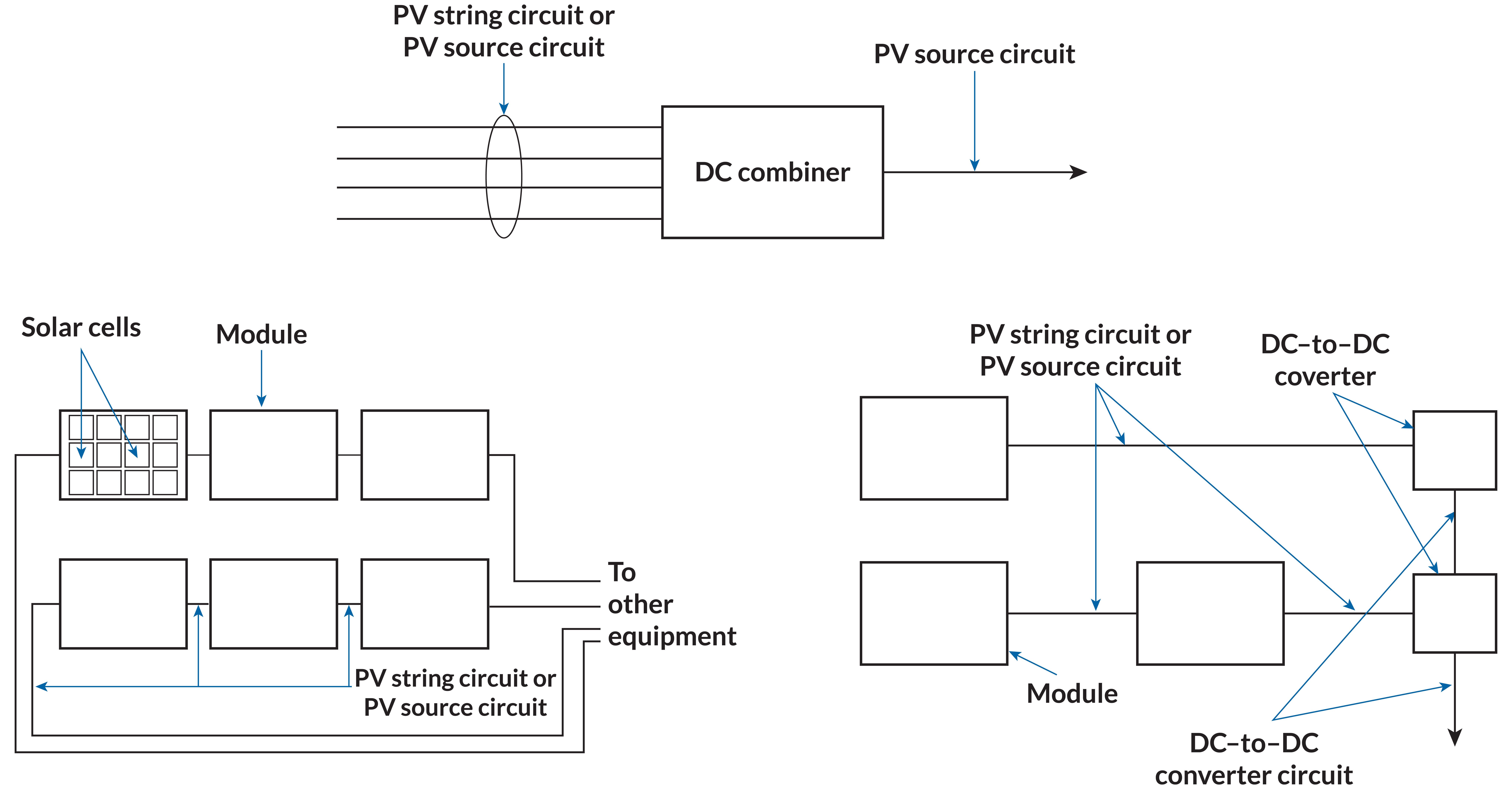
- 690.4(G), PV Equipment Floating on Bodies of Water, is added to focus on “float-o-voltaics”.
- 690.7, Maximum Voltage, keeps one- and two- family dwellings limited to 600VDC and other buildings limited to 1,000VDC, but 690.31(G) is added to address requirements for higher voltage systems (>1,000VDC).
- 690.12, Rapid Shutdown, clarifies an exception: “PV equipment and circuits installed on non enclosed detached structures including but not limited to parking shade structures, carports, solar trellises, and similar structures shall not be required to comply with 690.12.”
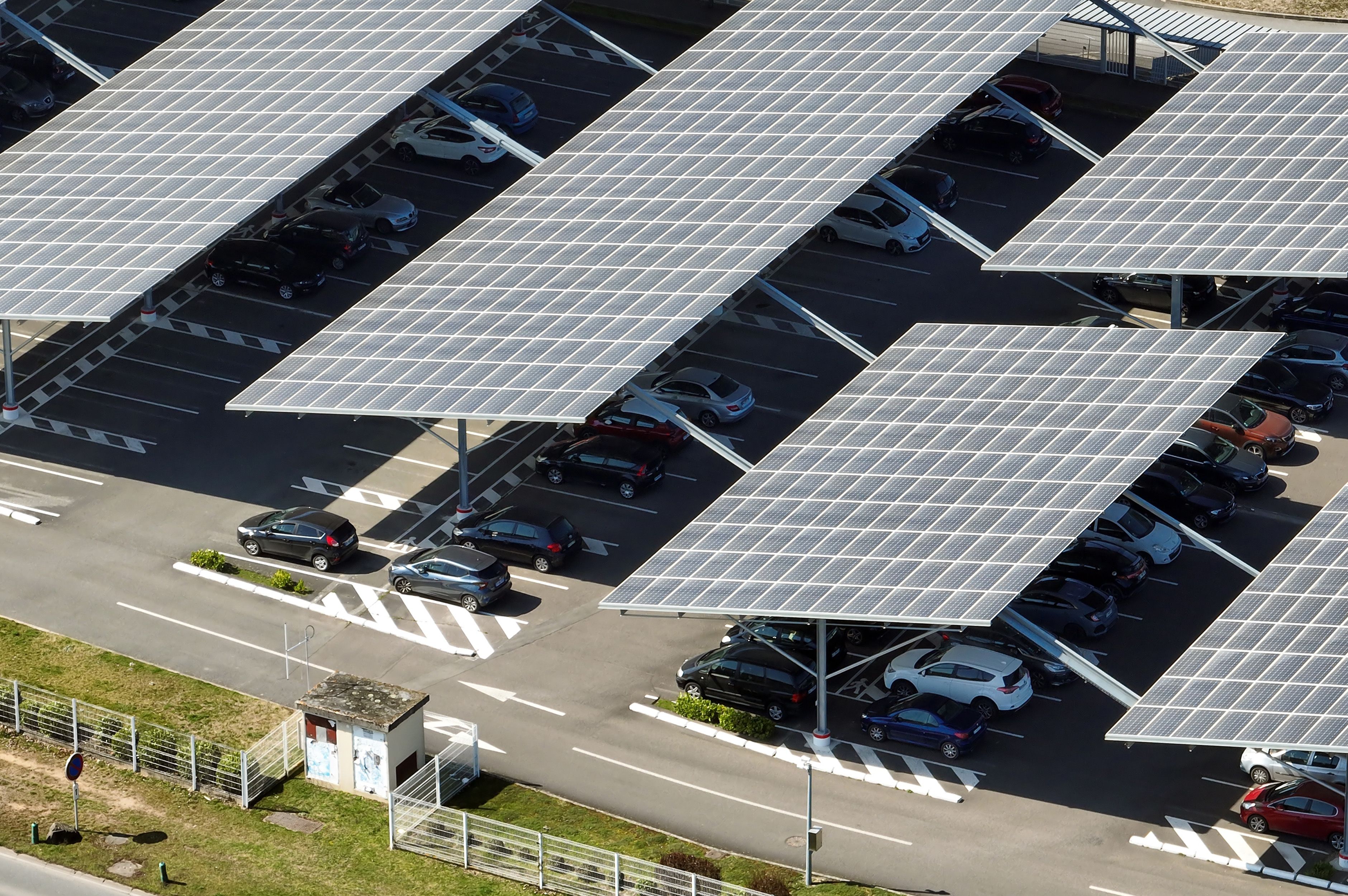
- 690.12(A), Controlled Conductors, clarifies an exception: “PV system circuits originating within or from arrays not attached to buildings that terminate on the exterior of buildings and PV system circuits installed in accordance with 230.6 shall not be considered controlled conductors for the purposes of 690.12”.
- 690.12(D), Buildings with Rapid Shutdown, removes specific coloring and reflective requirements for product labels.
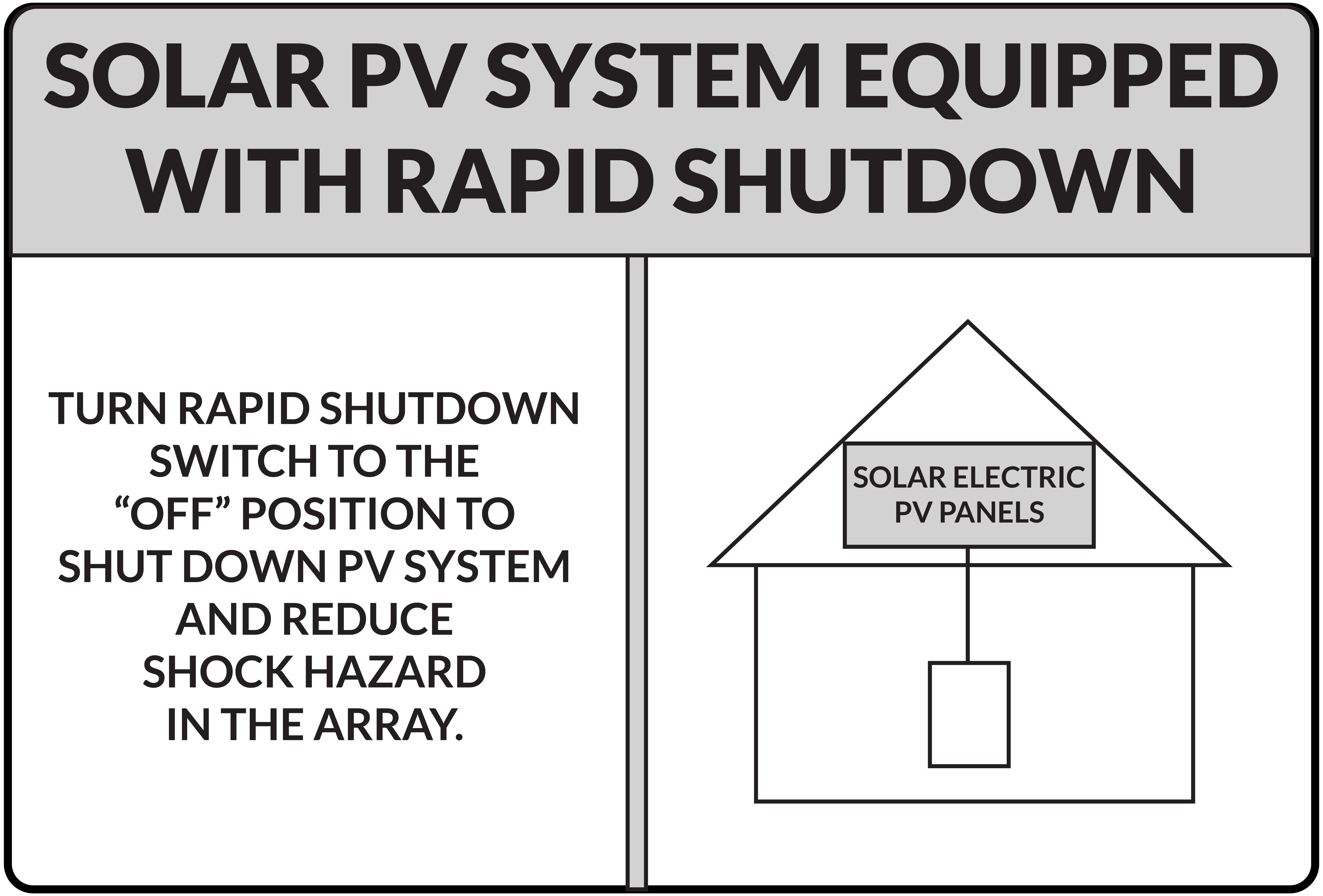
- 690.12(D)(1), Buildings with More Than One Rapid Shutdown Type, added from 690.56(C)(1).
- 690.31(C)(2), Cable Tray, adds clarifications with direct references to Article 392 for installation requirements and ampacity calculations.
3. Article 691: Large-Scale Photovoltaic (PV) Electric Supply Stations
- 691.4(2), Special Requirements for Large-Scale PV Electric Supply Stations, removes requirements to use fencing for restriction.
4. Article 705: Interconnected Electric Power Production Sources
- Article 712, DC Microgrids, removed and added to Article 705.
- DC coupled is now DC interconnected, images moved from Article 690 to Article 705.

- AC coupled is now AC interconnected, images moved from Article 690 to Article 705.
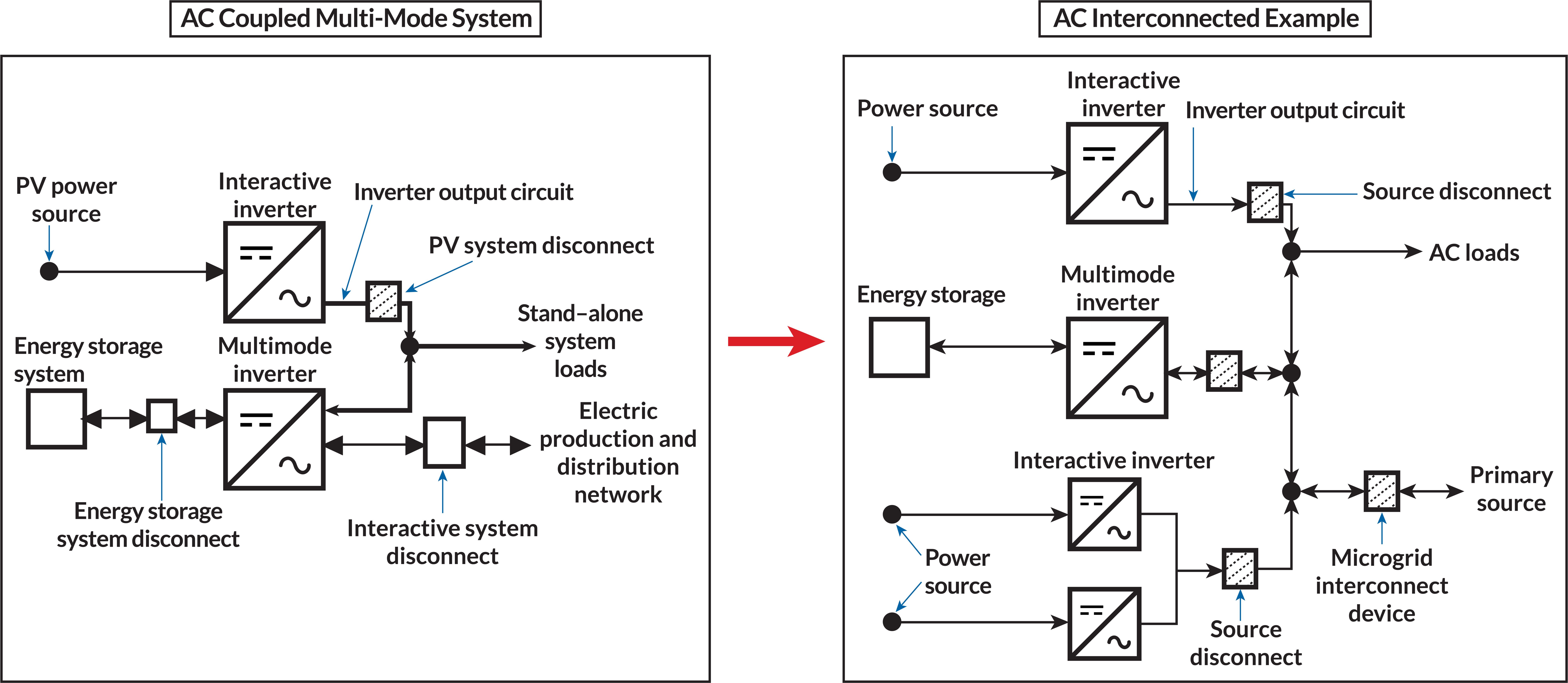
- 705.11 title changed from “Supply-Side Connections” to “Source Connections to a Service” with new sections and requirements for connections and disconnecting means.
5. Article 706: Energy Storage Systems
- Definition revised:
- “Energy Storage System: One or more components assembled together capable of storing energy and providing electrical energy into the premises wiring system or an electrical power production and distribution network.”706
- 706.15, Disconnecting Means, adds term ‘emergency shutdown function’:
- “For one- and two- family dwellings, an ESS shall include an emergency shutdown function to cease the export of power from the ESS to premises wiring of other systems. An initiation device(s) shall be located at a readily accessible location outside the building and shall plainly indicate whether in the “off” or “on'' position. The “off” position of the device(s) shall perform the ESS emergency shutdown function.”
- Emergency Shutdown System is different from Rapid Shutdown for PV Systems on Buildings but it is possible to have the same “initiation device” control both.
6. Article 710: Stand-Alone Systems
- If an ESS can operate as stand-alone, follow Article 710.15 (formerly 690.10).
Conclusion
The purpose of this paper is to provide an introduction to changes made to the 2023 NEC relating to solar and storage. Sections unchanged from the 2020 NEC were not addressed. Everyone, especially those not familiar with the previous edition, should review the code in its entirety here. Embracing the 2023 NEC will ensure that professionals are well-equipped to navigate the complexities of solar and storage installations while upholding the highest standards of safety and performance.
Ensuring the highest standard of safety and performance is what c3controls is all about, with 15+ million electrical control product configurations and a complete UL508A panel shop to help you succeed in solar, storage, and more!

----------------------------------------
Descargo de responsabilidad:
El contenido proporcionado en este documento técnico está destinado únicamente a fines de brindar información general y se proporciona en el entendimiento de que los autores y editores no se dedican a la prestación de servicios de ingeniería, consultoría u otros servicios profesionales. La práctica de la ingeniería está impulsada por circunstancias específicas y únicas para cada proyecto. En consecuencia, cualquier uso de esta información debe realizarse solo con previa consulta a un profesional calificado y con licencia que pueda tener en cuenta todos los factores relevantes y los resultados deseados. La información de este documento técnico se publicó con un cuidado y una atención razonables. Sin embargo, es posible que parte de la información contenida en estos documentos técnicos esté incompleta, sea incorrecta o no se aplique a circunstancias o condiciones particulares. No aceptamos responsabilidad por pérdidas directas o indirectas que resulten de usar, confiar o actuar sobre la información en este documento técnico.
ISO 9001:2015
Certificado
Más de 17 millones de productos
Configuraciones
Toda la vida
Garantía
Garantizado
Envíos en el mismo día
Precios ventajosos
Ahorre hasta un 40%
c3controls Headquarters, USA
664 State Avenue
Beaver, PA 15009
